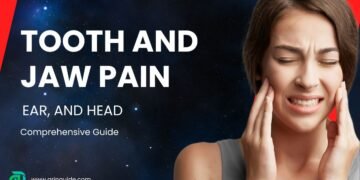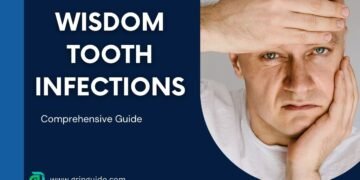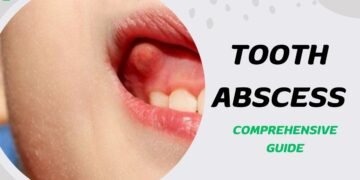Table of Contents
Understanding Infected Tooth Extraction
Infected tooth extraction is a dental procedure undertaken to remove a tooth that has become severely infected. The process typically becomes necessary when an infection penetrates the tooth’s pulp, which consists of nerves and blood vessels, leading to significant pain and potential spread of infection to surrounding tissues. This condition often arises due to untreated cavities, cracks in the tooth, or previous dental work that has failed.
Symptoms of an infected tooth can range from mild discomfort to severe pain, swelling, and fever. Common signs include a persistent throbbing toothache, sensitivity to hot and cold temperatures, swelling in the face or cheek, tender or swollen lymph nodes under the jaw or in the neck, and a bad taste in the mouth due to the presence of pus. If left untreated, these infections can lead to more serious health issues, including abscess formation, systemic infection, and even sepsis.
Tooth extraction becomes imperative when the infection is beyond the scope of less invasive treatments such as root canal therapy or antibiotics. Removing the infected tooth can prevent the spread of infection to adjacent teeth and other parts of the body, thus safeguarding overall health. The decision to extract an infected tooth is typically made after a thorough dental examination and imaging, such as X-rays, to assess the extent of the infection and damage to the tooth structure.
The importance of addressing an infected tooth promptly cannot be overstated. Delaying treatment can result in the infection spreading, increasing the complexity and cost of eventual treatment, and posing significant risks to one’s health. Therefore, recognizing the symptoms early and seeking timely dental care is crucial. Infected tooth extraction, while seemingly drastic, is a vital intervention to restore oral health and prevent further complications.
The Procedure: Step-by-Step
When faced with an infected tooth, understanding the extraction procedure can alleviate much of the anxiety associated with the process. The journey begins with an initial consultation, where your dentist will conduct a thorough examination to evaluate the condition of the infected tooth. This may involve a series of diagnostic tests, including X-rays, to determine the extent of the infection and the surrounding bone structure.
Once the preliminary assessments are completed, the dentist will discuss the findings and outline the recommended course of action. If infected tooth extraction is deemed necessary, the next step involves the administration of anesthetics. Local anesthesia is typically used to numb the area around the affected tooth, ensuring that you remain comfortable throughout the procedure. In certain cases, sedation options may be offered to help manage anxiety and enhance relaxation.
With the anesthetics in effect, the actual extraction process begins. Depending on the complexity of the case, the dentist may perform a simple extraction or a surgical extraction. A simple extraction is generally straightforward, involving the loosening and removal of the tooth using specialized dental instruments. Conversely, a surgical extraction may be required for teeth that are broken, impacted, or otherwise difficult to access. This involves making a small incision in the gum to remove the tooth, and possibly sectioning the tooth into smaller pieces for easier extraction.
After the tooth has been successfully removed, the dentist will focus on immediate post-extraction care. This includes cleaning the extraction site to prevent infection, and possibly placing stitches to facilitate healing. Gauze pads are used to control bleeding, and you will be provided with detailed aftercare instructions to promote recovery. This may include guidelines on managing pain, using prescribed medications, and maintaining oral hygiene to prevent complications.
Understanding these steps can significantly reduce the apprehension surrounding an infected tooth extraction. By knowing what to expect, you can approach the procedure with confidence and peace of mind.
Pain Management During and After Extraction
Pain management is a crucial aspect of the infected tooth extraction process. Patients often express concerns about the potential discomfort associated with the procedure. However, modern dentistry offers a variety of effective pain management techniques to ensure a relatively pain-free experience.
During the extraction, dentists typically use local anesthesia to numb the area around the infected tooth. Commonly used anesthetics include lidocaine and articaine, which are highly effective in blocking pain signals. For patients with severe anxiety or those undergoing complex extractions, sedation options such as nitrous oxide (laughing gas) or intravenous (IV) sedation might be recommended. These sedation methods help patients remain calm and comfortable, minimizing any sensation of pain during the procedure.
Post-extraction, managing pain becomes a top priority to facilitate healing and improve patient comfort. Over-the-counter pain relievers like ibuprofen or acetaminophen are often sufficient for mild to moderate discomfort. For more severe pain, dentists may prescribe stronger medications, such as opioids, but these are typically used for a short duration due to the risk of dependency. Additionally, non-steroidal anti-inflammatory drugs (NSAIDs) can help reduce inflammation and pain.
Home remedies also play a significant role in post-extraction pain management. Applying a cold compress to the affected area can significantly reduce swelling and numb the pain. Saltwater rinses are another effective home remedy; they help in keeping the extraction site clean and can alleviate discomfort. Maintaining proper oral hygiene and following the dentist’s aftercare instructions are essential for preventing complications and ensuring a smooth recovery.
In conclusion, while infected tooth extraction might seem daunting, advancements in pain management techniques and the availability of effective medications and home remedies make the process much more manageable. By understanding these options, patients can approach the procedure with greater confidence and ease.
Cost of Infected Tooth Extraction
The cost of an infected tooth extraction can vary significantly due to several influential factors. One primary element is the complexity of the extraction. Simple extractions, which involve teeth that are easily accessible and have straightforward root structures, generally cost less than surgical extractions. Surgical extractions might be necessary for teeth that are impacted, broken, or have complicated root formations, thus increasing the overall expense.
Geographical location also plays a crucial role in determining the cost. Urban areas or regions with a higher cost of living typically witness higher dental fees compared to rural areas. This variation is due to the differences in operational costs, including rent, utilities, and staff wages, which are generally higher in metropolitan areas.
The expertise and experience of the dentist can further influence the price. Dentists with advanced training, specialized skills, or significant experience may charge more for their services. However, opting for a highly skilled professional can ensure better outcomes and reduce the risk of complications during the infected tooth extraction process.
Additional treatments required in conjunction with the extraction can also add to the costs. For instance, if bone grafting is necessary to preserve the jawbone structure post-extraction, this will incur additional charges. Bone grafting is often required if the infection has caused significant bone loss or if future dental implants are planned.
To estimate the costs accurately, it is advisable for patients to consult their dentists for a detailed breakdown of the expected expenses. It is also beneficial to check with insurance providers, as many dental plans cover part or all of the costs associated with infected tooth extraction. Patients should inquire about what aspects are covered under their plan, including anesthesia, follow-up visits, and any additional treatments.
Understanding these various factors can help patients navigate the financial aspects of infected tooth extraction more effectively, ensuring that they receive the necessary treatment without unexpected financial burdens.
Recovery Process After Extraction
The recovery process following an infected tooth extraction is a critical phase that requires careful attention to ensure proper healing and prevent complications. Immediately after the procedure, it is common to experience some bleeding, swelling, and discomfort. Patients are usually advised to bite down on a gauze pad for 30-45 minutes post-extraction to help control bleeding. Applying an ice pack to the outside of the cheek intermittently can also aid in reducing swelling and numbing pain.
During the first 24 hours, it is essential to rest and avoid strenuous activities. Keeping your head elevated when lying down can help minimize swelling. Patients should refrain from smoking, using a straw, or rinsing their mouth vigorously, as these actions can dislodge the blood clot, leading to a painful condition known as dry socket.
Oral hygiene plays a vital role in the recovery process. While it’s important to maintain good oral hygiene, you must be gentle around the extraction site. Brushing and flossing should continue, but avoid the immediate area of the extraction. After the first 24 hours, gently rinsing your mouth with a warm saltwater solution can help keep the area clean and aid in healing.
Potential side effects of an infected tooth extraction include mild to moderate pain, which can be managed with over-the-counter pain medications as prescribed by your dentist. Swelling and bruising around the extraction site are also common and typically subside within a few days. However, certain signs warrant immediate medical attention, such as excessive bleeding, severe pain that doesn’t improve with medication, fever, or signs of infection like pus or an unpleasant odor from the extraction site.
Avoiding hard, crunchy, or spicy foods during the recovery period is advisable. Instead, opt for soft, nutritious foods that are easier to chew and won’t irritate the extraction site. Staying hydrated is also crucial, but avoid hot beverages initially to prevent aggravation of the wound.
Following these guidelines can significantly contribute to a smooth recovery after infected tooth extraction, ensuring that the healing process is as quick and painless as possible.
Healing Time and Factors Affecting It
The healing time for an infected tooth extraction can vary significantly from one individual to another. Typically, the initial recovery period ranges from one to two weeks. However, several factors can influence the duration of the healing process, making it necessary to consider each patient’s unique circumstances.
First and foremost, the patient’s overall health plays a critical role in the healing time. Individuals with strong immune systems and good overall health tend to recover more quickly from an infected tooth extraction. Conversely, those with underlying health conditions such as diabetes or autoimmune disorders may experience prolonged healing times due to their bodies’ compromised ability to fight infection and repair tissues.
Age is another crucial factor to consider. Younger patients generally recover faster because their bodies can regenerate tissues more efficiently. Older adults might find the healing process slower, as age can affect tissue regeneration and immune response. Nonetheless, proper care and medical guidance can help mitigate these age-related delays.
Adherence to aftercare instructions is paramount for a smooth recovery. Patients are advised to follow their dentist’s guidelines meticulously, which typically include maintaining oral hygiene, avoiding strenuous activities, and abstaining from smoking or consuming alcohol. Ignoring these instructions can lead to complications, such as dry socket or infection, which can significantly extend the healing period.
Regular follow-up visits with the dentist are essential to monitor the healing process and address any arising issues promptly. These visits enable the dentist to ensure that the extraction site is healing properly and to provide additional care if necessary. Early detection and intervention can prevent complications, thereby promoting a quicker recovery.
In conclusion, while the average healing time for an infected tooth extraction is one to two weeks, individual factors such as overall health, age, and adherence to aftercare instructions play crucial roles in determining the exact duration. Regular follow-up visits with the dentist further enhance the chances of a smooth and timely recovery.
Potential Complications and How to Handle Them
Infected tooth extraction, while generally safe and effective, can sometimes lead to complications. Being aware of these potential issues and understanding how to manage them is crucial for a smooth recovery process.
One of the most common complications is dry socket, a condition where the blood clot at the extraction site dislodges or dissolves before the wound has a chance to heal. Symptoms of dry socket include severe pain radiating to the ear, bad breath, and an unpleasant taste in the mouth. If you suspect a dry socket, contact your dentist immediately. Treatment typically involves cleaning the socket and applying a medicated dressing to promote healing and alleviate pain.

Another potential issue is infection at the extraction site. Infection symptoms may include increased pain, swelling, fever, and pus discharge. To minimize the risk of infection, follow your dentist’s post-operative care instructions carefully, such as maintaining good oral hygiene and taking prescribed antibiotics if necessary. If an infection is suspected, prompt professional evaluation is essential to prevent further complications.
Prolonged bleeding is another concern that may arise after an infected tooth extraction. While some bleeding is normal within the first 24 hours, excessive or persistent bleeding requires attention. Applying gentle pressure with a clean gauze pad can help control minor bleeding. However, if bleeding continues beyond a reasonable period, seek professional help immediately to address the issue.
Preventive measures play a significant role in mitigating these complications. Follow dietary recommendations, avoid smoking, and refrain from vigorous physical activity during the initial recovery phase. Keeping the extraction site clean and avoiding actions that may dislodge the blood clot, such as using straws or spitting forcefully, can further enhance recovery.
Recognizing early signs of complications and knowing when to seek professional help can make a significant difference in your recovery journey. If you encounter any unusual symptoms or have concerns about your healing process, do not hesitate to reach out to your dentist for guidance and support.
Long-term Oral Health After Extraction
Maintaining long-term oral health following an infected tooth extraction is crucial to prevent future dental issues and ensure overall well-being. The extraction site must be monitored closely during the healing process to avoid complications such as infection or dry socket. Regular dental check-ups play a pivotal role in this regard, as they allow for early detection of potential problems and provide opportunities for professional cleaning and advice.
Proper oral hygiene practices are essential to protect the remaining teeth and gums. This includes brushing at least twice daily with fluoride toothpaste, flossing to remove plaque from between the teeth, and using an antiseptic mouthwash to reduce bacteria. Additionally, a balanced diet that limits sugary and acidic foods can help maintain a healthy oral environment.
Making informed lifestyle choices also supports dental health. For instance, quitting smoking and reducing alcohol consumption can significantly enhance oral health outcomes. Smoking, in particular, is a known risk factor for periodontal disease and can impair the healing process post-extraction. Staying hydrated and chewing sugar-free gum can stimulate saliva production, which naturally helps to cleanse the mouth and protect against decay.
When it comes to replacing the extracted tooth, several options are available to restore functionality and aesthetics. Dental implants are a popular choice due to their durability and resemblance to natural teeth. They involve the surgical placement of a titanium post into the jawbone, which acts as a root for the replacement tooth. Alternatively, dental bridges can be considered. Bridges use the adjacent teeth as anchors for the artificial tooth, effectively “bridging” the gap left by the extraction.
By adhering to these recommendations, individuals can minimize the risk of future dental issues and maintain optimal oral health. Regular visits to the dentist, combined with diligent oral care and healthy lifestyle choices, form the foundation of a robust dental care regimen after an infected tooth extraction.
FAQs
-
How do I know if my tooth extraction is infected?
After a tooth extraction, it’s crucial to monitor the site for any signs of infection. Common symptoms include persistent pain, swelling, redness, and a foul taste or odor in your mouth. You might also experience fever or swollen lymph nodes. If you notice any of these symptoms, it’s essential to contact your dentist immediately.
-
What can happen if a tooth is pulled while infected?
Extracting a tooth while it’s infected can lead to several complications. The infection can spread to other areas, including the jawbone and surrounding tissues, potentially resulting in a more severe condition called osteomyelitis. Additionally, the healing process may be delayed, increasing the risk of a dry socket, which is a painful condition where the blood clot at the extraction site dislodges or dissolves prematurely.
-
How to treat an infected tooth extraction site?
Treating an infected tooth extraction site typically involves a combination of antibiotics and proper oral hygiene. Your dentist may prescribe antibiotics to combat the infection and recommend saltwater rinses to keep the area clean. Over-the-counter pain relievers can help manage discomfort. It’s vital to follow your dentist’s instructions closely to ensure proper healing.
-
Can an infected tooth socket heal on its own?
While minor infections may sometimes resolve with good oral hygiene, it’s not advisable to rely on self-healing. An untreated infection can worsen, leading to more severe complications. Always seek professional dental advice if you suspect an infection. Early intervention can prevent further issues and promote a smoother recovery.











